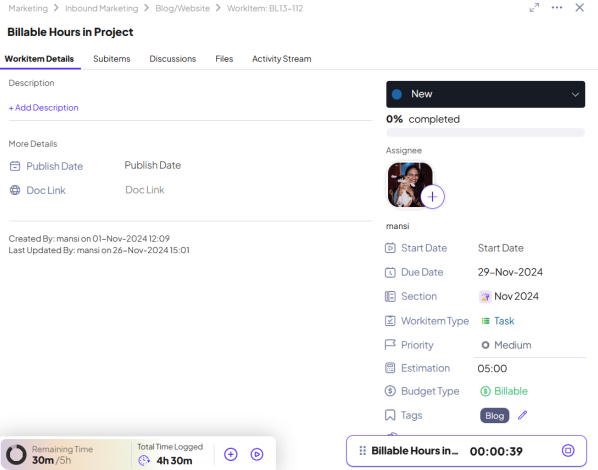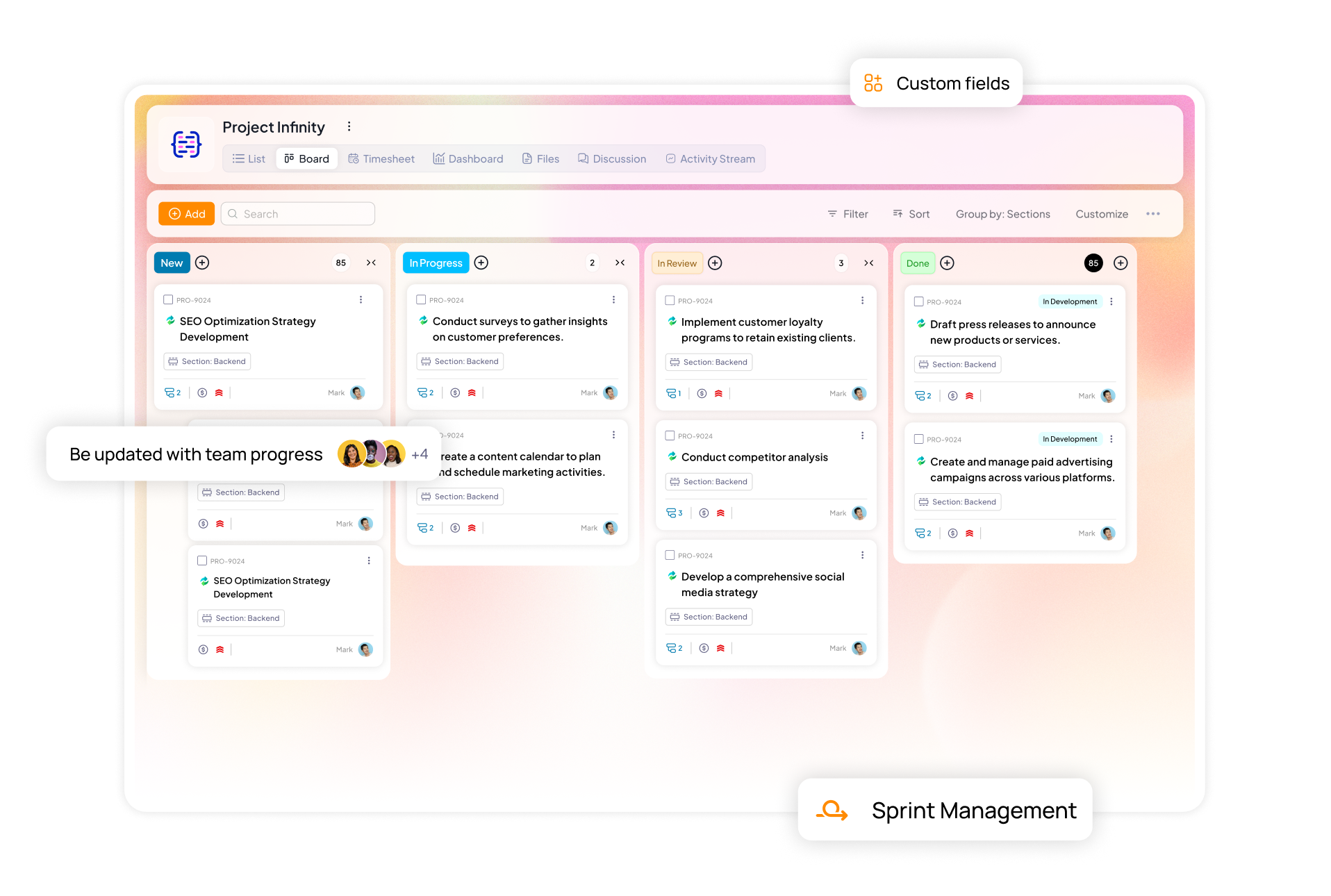“Your time isn’t money; it’s worth more than money.”
This quote is more important than ever right now, where there is virtually no cap on the money you can earn with the right set of skills.
But here’s the truth no one talks about: increasing billable hours isn’t about cramming your day with more work, it’s about transforming how you work.
In this article, you will learn about billable hours, their importance, how to track them, and tips to increase your billable time.
Billable hours or billable time is the time that you spend on client work and will charge the client for. It is an important aspect of any client-service relationship. These hours are charged to the client for all the work you do that directly relates to their project.
Learning how much time your firm spends on billable hours helps you understand team productivity and profitability. Billable hours are typically tracked across professional servicing industries like PR, consulting, law, digital marketing, and architecture.
Billable hours is the time spent directly working on tasks or projects for clients that can be charged to them. This includes tasks such as designing, coding, preparing for a trial, keeping accounts, or consulting.
Non-billable hours, on the other hand, are spent on internal activities like administrative work, team meetings, training, or marketing efforts that support the business but cannot be directly billed to a client.
While billable hours generate revenue, managing non-billable time effectively supports overall operational efficiency of a company and promotes business growth.
All your projects are tied to your clients’ requirements when you work in a professional service industry. This means your client will make a payment based on the time and effort you spend on their project.
Let’s look at an example to understand why billable hours tracking is important:
You are a marketing company, and you’ve got a huge project to write a copy for your client’s website. The approximate time it’s going to take you to research, draft, review, and publish is 90 hours.
For this, you have an hourly rate set with your clients and have signed an agreement. Now by the end of the project, you end up taking 102 hours to complete the work. Tracking those billable hours will help you provide proof of work to the client for where your time went, how you executed the work, and why it took additional time.
This helps in building client trust, provides transparency, and helps you accurately bill your client.
Besides this, the other benefits of tracking billable hours are:
As we discussed above, accurately calculating billable hours is important, especially in agencies where time = money.
Here’s how you can track your billable hours accurately.
The very first thing you need to do is to decide how much you will charge the client per hour for the project. To do this, start by adding up all your costs, including direct expenses (tools, software, materials), indirect expenses (rent, utilities), and your team’s salary.
Then, decide on a profit margin to account for unforeseen costs (like one-time freelancers, redoing a task due to employee error etc.) This will give you your annual cost.
After that, consider your teams’ availability and subtract the time spent on non-client work from this. Divide your total costs by the total hours to determine how much you should charge per hour.
Example:
Your total costs are:
Profit Margin:
Calculate Billable Hours:
Determine Billable Rate:
There are multiple ways out there to track your hours including filling entries manually or using a time tracking tool. Many businesses also often use a simple Excel sheet to track how much time their employees spend on tasks.
But when working on client projects, accuracy and transparency should be your top priority. This is where a tool like 5day.io can help you.
In 5day.io, you can categorize your tasks into billable and non-billable work. Use the auto-timer to track time to-the-minute, so no effort is missed.
Additionally, you can onboard your clients to oversee the projects’ progress and give them the right to approve timesheets directly with custom roles and permissions.
Here’s how it looks in action:

Once you are done with the task and have the total time logged in, you can submit the timesheet for approval, where your client can directly approve it.
After tracking the hours, now it is time to create a client invoice. To know the total billable work and project billing, multiply the total time with per hour rate.
Here are some best practices to create a professional invoice:
Increasing billable hours is important to boost the revenue generation of your business and increase profitability. Let’s look at two simple ways you can increase billable time in your projects:
Employees spend a lot of time on repetitive work like creating meetings, sending documents, and filling out timesheets. Automating tasks like these with workflows, and auto timers helps save time to focus on more strategic and billable work.
Create a system to bifurcate high value tasks for low value tasks. This means focusing on the effort-value metric and avoiding high effort and low value tasks at all costs.
One way to gauge which tasks are high value is:
5day.io combines time-tracking for accurate time management with project management. Which means, you can track time for your tasks based on billable and non-billable categorization.
Its user-friendly interface, customizable reports, and focus on billable tasks help you optimize every hour you work. Whether you’re an individual freelancer or part of a team, 5day.io can be the right fit for you to track, analyze, and monetize your time with precision.
Want to see it in action? Claim your completely free 3-month trial now.
Let's get your team onboarded
Try all the premium 5day.io features free for 30 days. No credit card needed.

Product
Features
Industries
Teams
Compare
Resources
Company